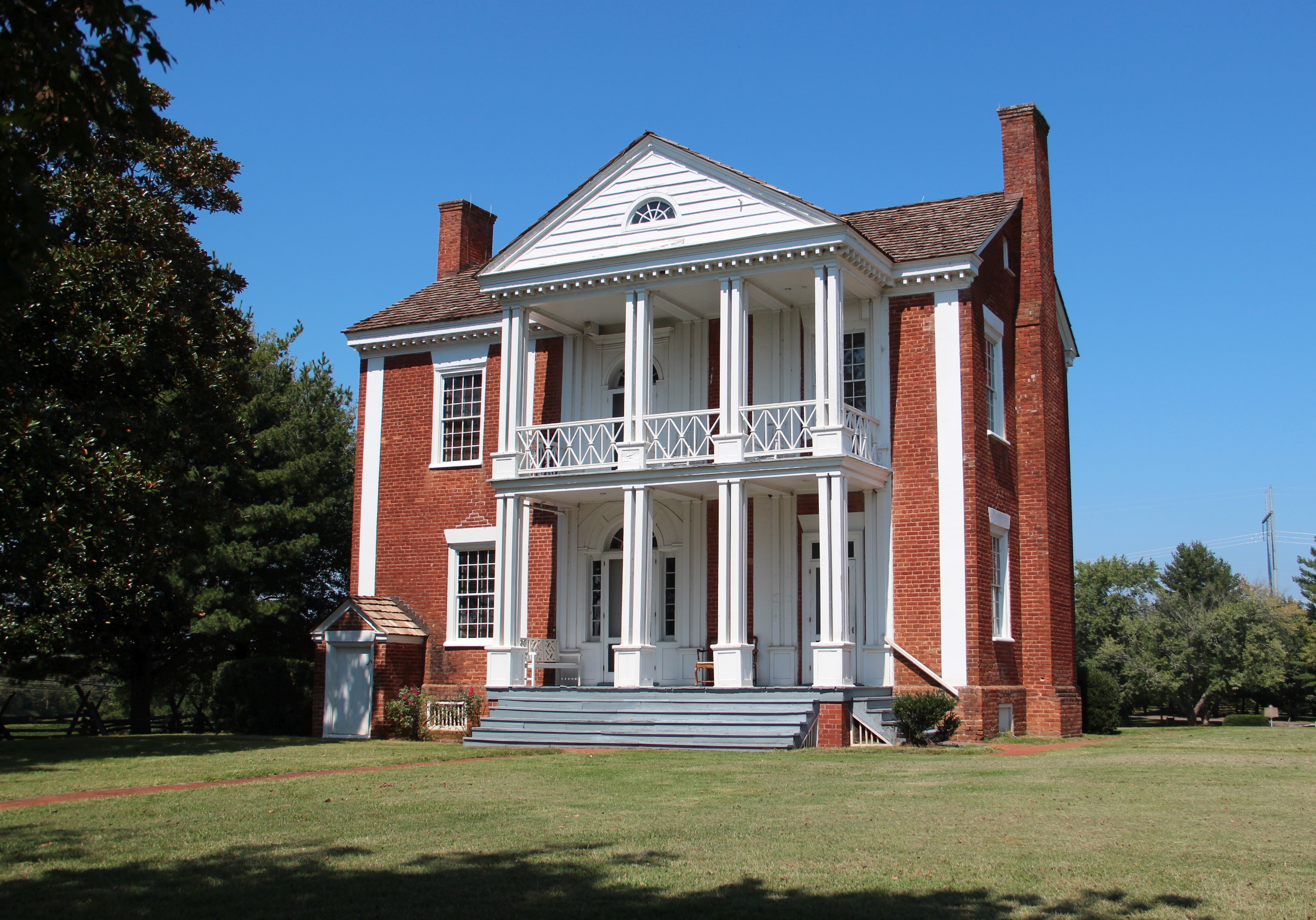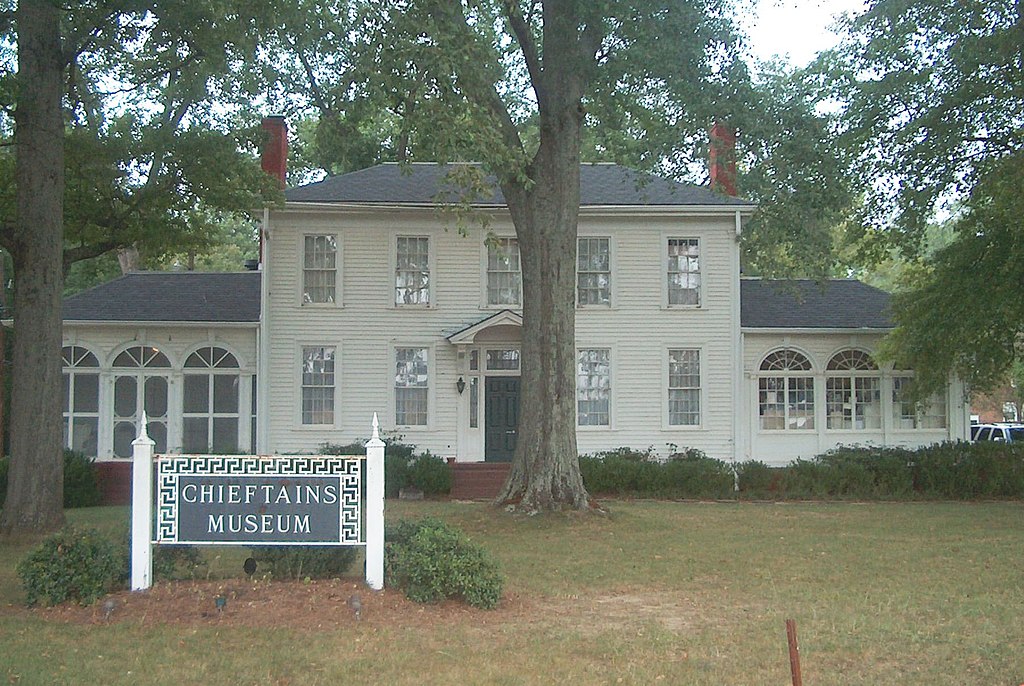
The state of Georgia is rich in Native American history with tribes settled here long before European arrival. Cherokee and Creek tribes were forcibly removed on the Trail of Tears. There are now 10 locations in the state with National Trail of Tears designations. But these landmarks are a reminder of their legacy.
New Echota State Historic Site, Calhoun

New Echota State Historic Site near Calhoun was home to the capital of the Cherokee Nation starting in 1825 until the tribe’s removal in the 1830s. Here, the tribal council constructed a council house, supreme court, and the offices of the first Indian language and Cherokee newspaper.
After removal, the area became a ghost town for more than 100 years. In 1954, the Georgia Historical Commission began its first excavation of the site. Many of the buildings were later restored or reconstructed. It opened to the public in 1962 and was taken over by Georgia State Parks in 1973.
Vann Cabin, Cave Spring

In the small town of Cave Spring is the Vann Cabin, a wooden structure from the 1800s believed to be built by David Vann, nephew of James Vann. It was this location that housed the post office during the Civil War and later a hotel before falling into disrepair. There is also a marker for the Trail of Tears. It opened, restored, to visitors in 2016.
Chief Vann House, Chatsworth

Chief Vann House Historic Site honors the most well-known figure in the Georgia Cherokees. James Vann rose up as a Cherokee leader and local businessman in the 1790s with his thriving plantation. He constructed his stunning brick mansion in 1804 but was tragically killed only a few years later.
But his son Joseph managed the house and carried on his legacy. Sadly, the family lost their home during the Trail of Tears. But the house, now managed by Georgia State Parks, is the state’s best-preserved historic Cherokee Indian home.
Chieftains Museum and Major Ridge Home, Rome

Chieftains Museum/Major Ridge Home honors Major Ridge, who was born in 1771 in present-day Tennessee but in 1800 settled in Georgia with his Cherokee wife. He fought with Cherokee forces during the War of 1812 and was given the title of Major from Andrew Jackson.
Ridge and his family later lived in a cabin while they were building a plantation. When President Jackson passed the Indian Removal Act, the Ridge family’s land was given to another person. But fearing for further problems with the government, Ridge and other Cherokees, including David Vann, signed the Treaty of New Echota.
It ceded territory in the Cherokee Nation to the United States and agreed that the people would move further west. It was a controversial move that led to Ridge’s death. The Ridge home served as a residence for many different families over the years, including local mill workers.
In 1969, it was donated to the Junior League Service of Rome and became a National Historic Landmark and museum. It’s also the first private site to be designated on the Trail of Tears National Historic Trail.
Etowah Indian Mounds, Cartersville

Etowah Indian Mounds are a well-preserved site of the Mississippian culture, home to thousands of Native Americans from 1000 to 1550 AD. The 54-acre park has six earthen mounds, including one that you can climb to the top.
The adjoining museum in Cartersville has artifacts from the period, including decorative beads, weapons, and hand-carved stone effigies. A nature trail runs through the park, where you can see the Etowah River, an important element of the Mississippian culture. Only a small portion of the site has been excavated and it is now managed by Georgia State Parks.
Nacoochee Mound, Sautee Nacoochee

Hardman Farm near Helen is unique in that it’s a private home of Anna Ruby Nichols built next to an Indian mound. The family built a gazebo on top of it, which dates back to 100-500 AD. Later, the South Appalachian Mississippians settled here in 1350-1600 AD.
The mound was excavated and found a number of burials before it was reconstructed. The home offers guided tours of the parlor and original lighting. There’s also an old dairy barn that operated here in the 1910-1920s. Stop by the nearby Sautee Nacoochee Center to learn more about the Native American ties to North Georgia.
Ocmulgee National Monument, Macon

Ocmulgee Mounds National Historical Park in Macon features the Great Temple and burial mounds as well as ceremonial mounds dating back to before 1000 AD. Excavations have revealed artifacts from over 17,000 years of habitation.
The park itself is over 700 acres and has a number of trails as well as a mound visitors can go inside. It was first protected by the National Parks Service in 1934 and added to the National Register of Historic Places in 1966. There’s also a push to help it become a full status national park.
Kolomoki Mounds, Blakely

Kolomoki Mounds State Park in southwest Georgia is the oldest and largest Woodland Indian site in the region. Tribes lived here from 350 to 750 AD. The Great Temple Mound is 57 feet high and the state’s oldest.
The site, managed by Georgia State Parks, has its own museum around an excavated mound. In addition to the Native American history, the park offers camping and other outdoor activities. The mounds were first designated as a National Historic Landmark in 1964.
PIN IT



What about the chahaw indian tribe in albany.ga and what became of them. There were 5 tribe around albany.ga why are they not recorded and given any recommendations
Good point, Randy. I’d need to do more research.
Thank you for sharing these landmarks.
I love seeing pictures of Settendown, Sittingdown
Creek. I have heard of Old Town near the town of
Athens ,Georgia.